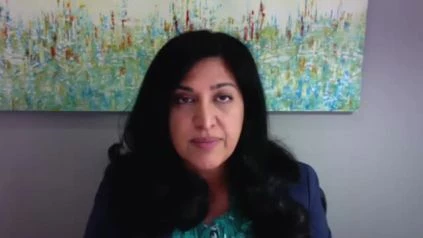Natasha Leighl, MD Princess Margaret Cancer Centre speaks on the press release Liquid biopsies timely and effective testing method for NSCLC patients in Canada.
Denver — October 2, 2020–According to research presented today at the IASLC 2020 Lung Cancer Hot Topic: Liquid Biopsy Virtual Conference, next-generation sequencing (NGS) of cell-free DNA (cfDNA) obtained from blood samples may enhance diagnostic testing in patients with advanced NSCLC, and may also be faster and less costly compared to standard tissue profiling.
Since its introduction in 2018, there have been several developments in liquid biopsy, and the idea of a “blood-first” approach — superseding or replacing tissue biopsy — is a current subject of much discussion and debate. The IASLC Liquid Biopsy Conference is a virtual forum to discuss research in this field and eventually assess if it is relevant to public health and clinical settings due to the cost and efficacy of the testing.
From the viewpoint of the Canadian public health system, Canadian researchers led by Dr. Natasha Leighl of the Princess Margaret Cancer Centre, Toronto, Canada, investigated the clinical usefulness and treatment effects of liquid biopsy in patients with advanced NSCLC.
At six Canadian hospitals, Dr. Leighl and her colleagues grouped 210 patients into two cohorts:
Cohort 1 comprised 150 naïve patients treated with a detectable illness and a history of smoking of less than 10 cigarette packs per year.
Cohort 2 enrolled 60 patients with known oncogenic drivers whose Tyrosine Kinase Inhibitor (TKI) disease had advanced.
118 patients in Cohort 1 (79 percent) had more than one alteration detected by the G360 test after removing variants of uncertain importance and synonymous alterations (304 alterations detected in 35 genes). Of these, 284 modifications with FDA-approved drugs or available clinical trials were deemed actionable. EGFR (32.0 percent), ERBB2 (3.2 percent), MET (3.2 percent), ALK (1.4 percent), KRAS G12C (1.1 percent), and ROS1 (0.4 percent) were the actionable goals. TP53 (27.8 percent), KRAS non-G12C (3.9 percent), PIK3CA (3.9 percent) and BRAF nonV600E (1.1 percent) were additional clinically important modifications.
More than one characterized genomic alteration was observed in Cohort 2, 53 patients (85 percent) with a total of 165 alterations in 28 genes including EGFR (45.8 percent, five were C797S), ALK (fusions 3.3 percent; mutations 2.0 percent), BRAF (V600E 0.7 percent; other 3.3 percent), MET (amplification 2.0 percent; exon 14 0.7 percent), FGFR3 (0.7 percent), and RET (0.7 percent) Twenty-seven patients (14.0% in Cohort 1; 10% in Cohort 2) did not have any changes observed by G360. The median number of alterations per patient was three (range 1-17) in samples with observed alterations. The median time for G360 to be recorded was 7 days (range 5-27).

